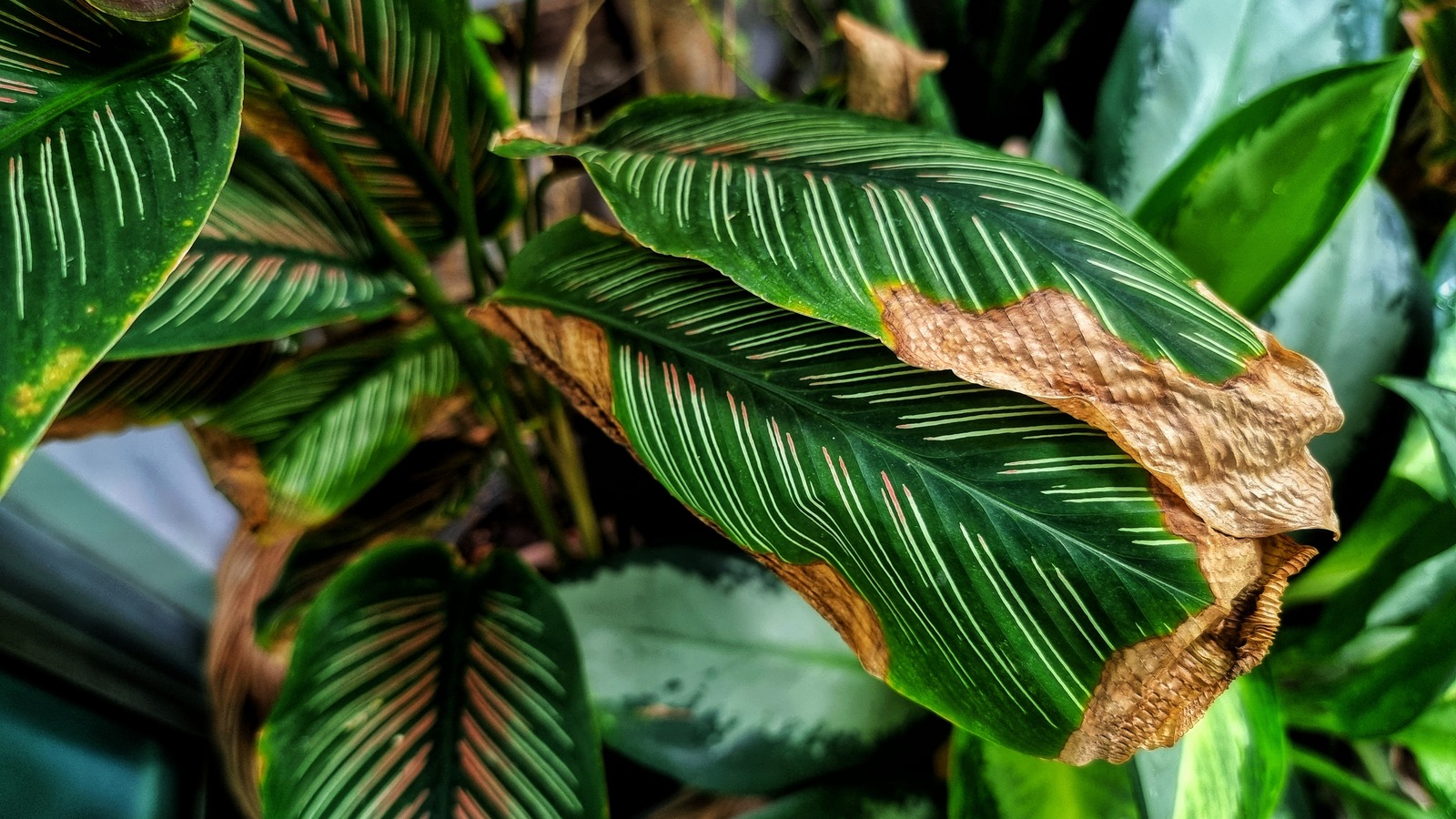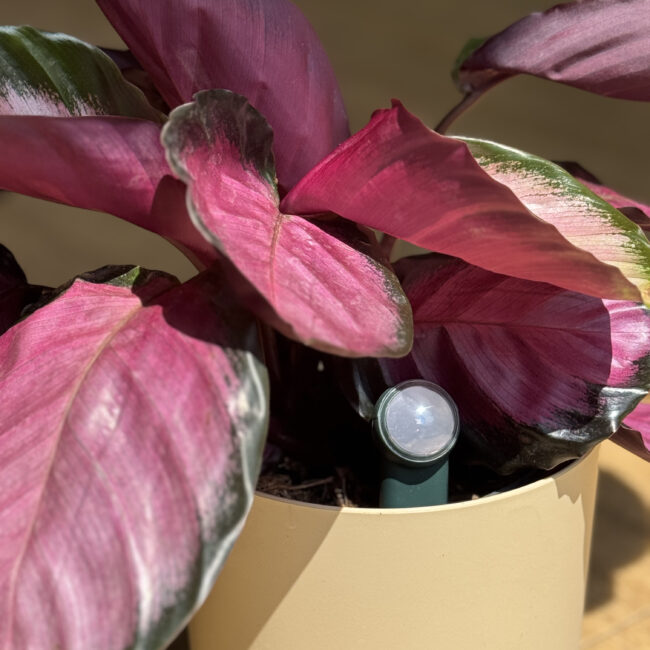


Hardly any other plant genus causes as much frustration as Calatheas. Their colourful leaves with zebra patterns or brushstrokes are eye-catching – at least at first. But as soon as they arrive in their new home, the tips dry out, the edges turn brown and the overall appearance leaves a lot to be desired. Even experienced plant lovers reach their limits here. But the good news is: you’re not doing anything wrong. Our living conditions are simply not what Calatheas love.
Calatheas originate from tropical regions with constantly high humidity, filtered light and humus-rich, loose soil. In their homeland, there are no heating periods, no dry indoor air, no tap water with lime, no direct sunlight. In short, our living rooms are anything but ideal for them.
Particularly problematic are:

The FYTA Beam does not replace the natural conditions of tropical rainforests – but it does help you to assess your plant more realistically. Instead of guessing in the dark, FYTA gives you concrete insights into soil moisture, light conditions and temperature. This shows you why your plant reacts the way it does – and when you really need to take action.
In combination with the knowledge articles in the FYTA app, you will learn how to better assess your location and how seasonal changes affect your care. And if you’re ever unsure: the FYTA team of experts is on hand to provide you with quick, expert advice via support – including tips and empirical values from years of plant care experience.
Brown leaf edges are not a problem exclusive to Calathea. Marantas, alocasia, fern species or even classic starter plants such as Spathiphyllum or Dracaena also react to our living conditions with similar symptoms. The causes are almost always the same: too dry, too calcareous, too direct light.
Calatheas are particularly quick to show this reaction. What many people don’t realise: The plants we buy from garden centres or online retailers usually come from professional greenhouses with optimum conditions – constant humidity, filtered water, perfect light cycles. So it’s no wonder that the plants from these centres look immaculate when they arrive on the market. When they arrive in our homes, the difference for the plant is enormous – and visible after a few weeks.
This means that if you buy a Calathea, you should be prepared for its leaves to develop brown edges over time. This is completely normal and not a sign of a lack of care. Those who love these plants also love them with small blemishes – simply because it is unavoidable in our living spaces without much extra effort.
If your Calathea gets brown edges, this is not a sign of failure, but an indication of non-ideal conditions that often cannot be changed. With FYTA you don’t get a guilty conscience, but real guidance in plant care. And sometimes plant care also means taking the plant as it is – with a few brown tips and a lot of character.
